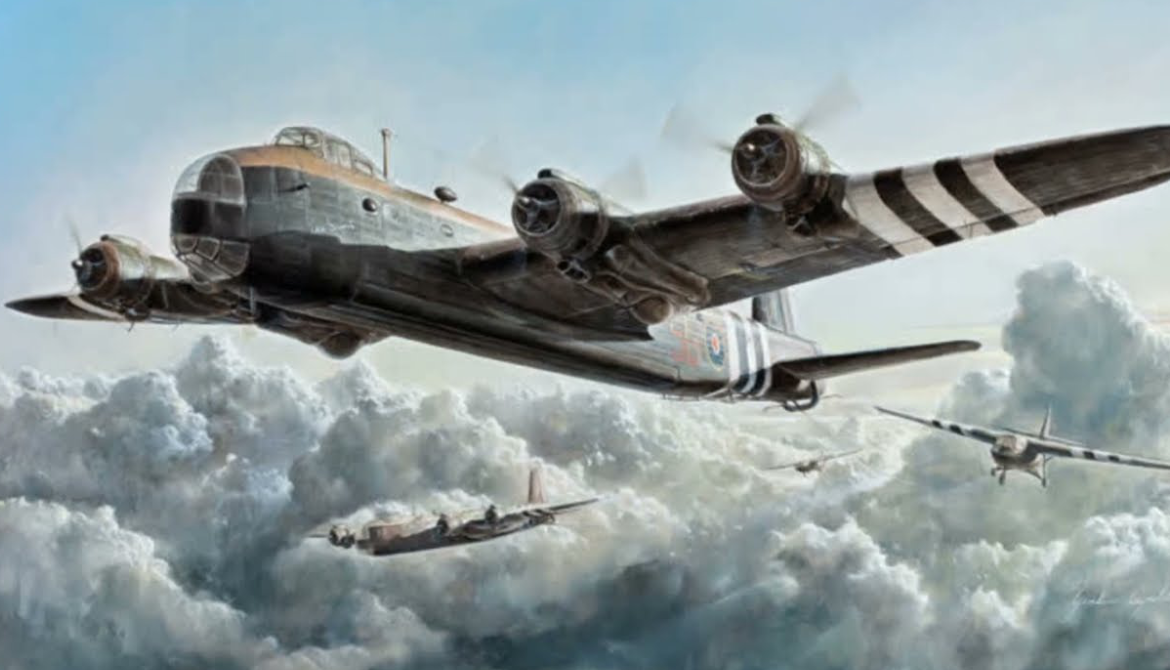Short Brothers lc.
Short Stirling Mk.I
|
|||||||||||||||||||||||||||||
.
History Short Brothers plc,
Short Stirling Mk.I
Manufactured 1939–1945
Introduction date 1940
First flight 14 May 1939

The Short Stirling was a British four-engined heavy bomber of the Second World War. It has the distinction of being the first four-engined bomber to be introduced into service with the Royal Air Force (RAF) during the war (the earlier Handley Page V/1500 being a WWI design that served during the 1920s).
The Stirling was designed during the late 1930s by Short Brothers to conform with the requirements laid out in Air Ministry Specification B.12/36. Prior to this, the RAF had been primarily interested in developing increasingly capable twin-engined bombers, but had been persuaded to investigate a prospective four-engined bomber as a result of promising foreign developments in the field. Out of the submissions made to the specification, Supermarine proposed the Type 317, which was viewed as the favourite, whereas Short's submission, named the S.29, was selected as an alternative. When the preferred Type 317 had to be abandoned, the S.29, which later received the name Stirling, proceeded to production.
Design and development

Origins
In the 1930s, the Royal Air Force (RAF) was interested primarily in twin-engined bombers.[These designs put limited demands on engine production and maintenance, both of which were already stretched with the introduction of so many new types into service. Power limitations were so serious that the British invested in the development of huge engines in the 2,000-horsepower (1,500 kW) class to improve performance. During the late 1930s, none of these were ready for production. The United States and the Soviet Union were pursuing the development of bombers powered by arrangements of four smaller engines; the results of these projects proved to possess favourable characteristics such as excellent range and fair lifting capacity, and in 1936, the RAF also decided to investigate the feasibility of the four-engined bomber.
Operational history
Crew accommodation

Operators
0
KmCeiling
0
KmCombat RANGE
0
Km/hAircraft Speed
0
Max Crew
Photo Gallery
Short Brothers plc, Short Stirling Mk.I
Manufactured 1939–1945
Introduction date 1940
First flight 14 May 1939


Short Brothers plc, Short Stirling Mk.I Manufactured 1939–1945 Introduction date 1940 First flight 14 May 1939
General characteristics
Powerplant
- Gross weight: 59,400 lb (26,943 kg)
- Max takeoff weight: (31,751 kg)
- Powerplant: 4 × Bristol Hercules XI 14-cylinder air-cooled sleeve-valve radial piston engines, 1,500 hp (1,100 kW) each
Specifications
- Maximum speed: 282 mph (454 km/h, 245 kn) at 12,500 ft (3,800 m)
- Cruise speed: 200 mph (320 km/h, 170 kn)
- Range: 2,330 mi (3,750 km, 2,020 nmi)
- Service ceiling: 16,500 ft (5,000 m)
Armament
- Guns: 8 x 0.303 in (7.7 mm) Browning machine guns: 2 in powered nose turret, 4 in tail turret, 2 in dorsal turret
- Bombs: Up to 14,000 pounds (6,400 kg) of bombs
.
Links to Youtube & Others
At the war's end BOAC obtained more Mark IIIs and gradually came up with better accommodation for its passengers, in three configurations. Bench seats were removed, and civil-standard seating installed.
Short Brothers plc,
Short Stirling Mk.I
Sunderland T9044 was discovered on the seabed off Pembroke Dock in Wales in 2000.[51] The site is protected and recovery of the aircraft is ongoing
Youtube Link
The 990 did not meet the specifications promised, and American Airlines reduced its order as a result.


















